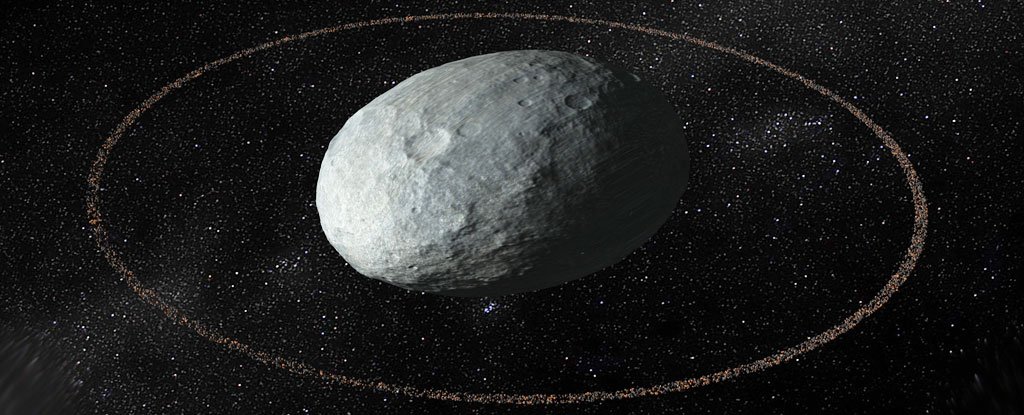Beyond the orbit of Neptune there are hundreds or even thousands of mysterious dwarf planets, most of which we know almost nothing about – but there's a lot to learn when we catch a rare glimpse. Today, scientists are reporting the discovery of a vast ring encircling Haumea, a distant dwarf planet that takes some 284 Earth years to orbit the Sun, and it's the first time we've seen a ring in this category of minor planet.
Of course, rings
around larger worlds in the Solar System are common, and while Saturn's is the
most famous and extensive, there are also ring systems around
the other giant planets: Jupiter, Uranus, and Neptune. Scientists have also previously
identified two rings around an object called Chariklo, one of a
population of small minor planets called Centaurs that
orbit the Sun between Jupiter and Neptune.
But Haumea's
ring is the first time astronomers have witnessed the phenomenon in a minor
planet that isn't a Centaur. The discovery, led by astronomer Jose
Luis Ortiz from the Instituto de Astrofísica de Andalucía in Spain, took more
than a little coordination to pull off.
Researchers from 10
different labs observed Haumea with 12 different telescopes across Europe as it
passed in front of a star called URAT1 533–182543 – an event astronomers called
an occultation.
The stellar backdrop took place in January this year, and the perspectives from
12 different angles enabled the team to observe the dwarf planet like never
before, and gave us our first glimpse at its ring system.
According to the team,
Haumea's ring has a width of 70 kilometres (43.5 miles) and a radius of about
2,287 kilometres (1,421 miles), and the dwarf planet rotates three times on its
axis in the time that a ring particle completes one revolution.
The occultation also
provided the team with our best analysis yet of Haumea's size and shape, which
the researchers describe as
"very exotic".
They say the dwarf planet
has an unusual elongated ellipsoid shape, with axes of approximately 2,322
kilometres (1,442 miles) by 1,704 kilometres (1,059 miles) by 1,138 kilometres
(707 miles), and no global atmosphere that can be detected.
In addition to the rings
found around Chariklo, there's also evidence of a similar phenomenon around
another Centaur called Chiron,
although it's less clear than the Chariklo ring.
Aside from those instances,
the Haumea ring is the first time we've detected this, so we're in some pretty
unfamiliar territory – but the researchers hint we may be about to observe an
amazing trend in the characteristics of these faraway, mysterious minor
planets.
"The discovery of a
ring around Haumea – a much more distant body, in a completely different
dynamical class, much larger than Chariklo and Chiron, with satellites and with
a very elongated triaxial shape – has numerous implications," the authors
write in their paper,
"such as rings being possibly common also in the trans-Neptunian region
from which Centaurs are delivered, and opens the door to new avenues of
research."

